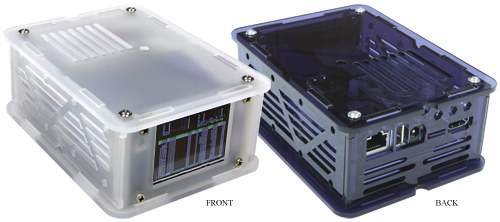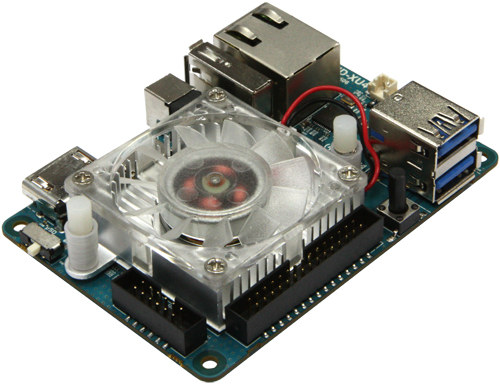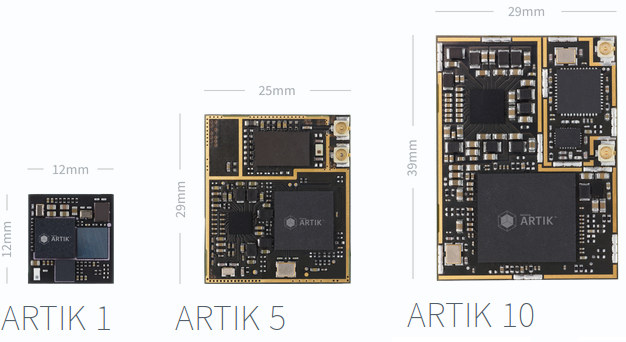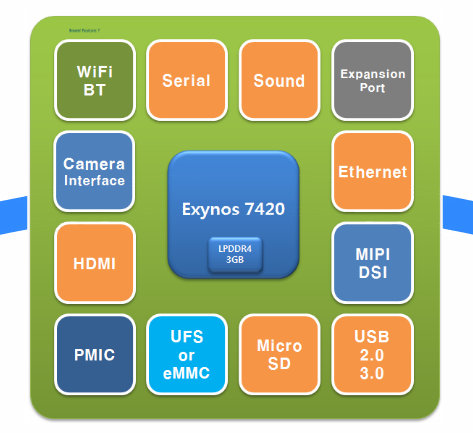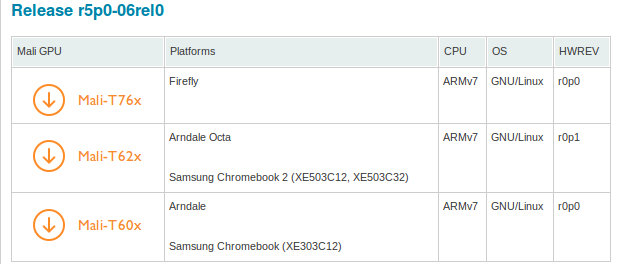Hardkernel launched ODROID-XU4 development board a couple of weeks ago. The board is a low cost ($74) update to ODROID-XU3 development board, with an Exynos 5422 octa core processor (4x A15, 4x A7), 2GB RAM, Gigabit Ethernet and USB 3.0, making it a pretty good target for a NAS. It’s easy to connect all requires parts such as hard drive and power supply together, but it would normally be a mess on your desk. So the company create a NAS kit for the board with an enclosure, cables, fans, and even an LCD display with they call Cloudshell for XU4 for sell for $39, so you can get a high relatively high performance NAS for around $113 + shipping, which will vary depending on your distributor, as well as an HDD or SSD drive. Cloudshell kit content: Enclosure with top and bottom covers, rear, front and side panels. Available in […]
ODROID-XU4 Development Board is a Smaller and Cheaper Version of ODROID-XU3 Board
Many people are expecting Hardkernel to launch an Exynos 7 board, but this won’t be with ODROID-XU4, maybe with ODROID-XU5, as the latest development board from Hardkernel is a modified version of ODROID-XU3 with the same Exynos 5422 octa-core processor with four Cortex-A15 cores @ 2GHz and four Cortex-A7 cores. ODROID-XU4 board specifications (differences with ODROID-XU3 highlighted and sometimes crossed out in bold): SoC – Samsung Exynos 5422 quad core ARM Cortex-A15 @ 2.0GHz quad core ARM Cortex-A7 @ 1.4GHz with Mali-T628 MP6 GPU supporting OpenGL ES 3.0 / 2.0 / 1.1 and OpenCL 1.1 Full profile System Memory – 2GB LPDDR3 RAM PoP (750 MHz, 12GB/s memory bandwidth, 2x32bit bus) Storage – Micro SD slot (up to 64GB) + eMMC 5.0 module socket (16, 32, and 64GB modules available) Video Output – micro HDMI (Up to 1080p) and DisplayPort (up to 2160p) Audio Output – HDMI, 3.5mm headphone jack, […]
Samsung Artik is a Family of Arduino Compatible Boards for IoT Applications
There was a time when development boards were only reserved to companies, then boards like Arduino or Beagleboard made these available and affordable to consumers, and with the introduction of the Raspberry Pi, the maker movement grew even more rapidly, and many low cost boards started to be designed and manufactured mostly my smallest companies. But now larger companies like Intel or Qualcomm have jumped on the makers’ bandwagon, and the latest entry is Samsung with their Artik platform currently comprised of three boards that are programmable with the Arduino IDE. Let’s go through specifications for the three boards: Artik 1 SoC – Dual Core MIPS32 processor @ 250MHz (microAptiv UP) and 80MHz (microAptiv UC) without GPU Memory – 1MB RAM on-chip Storage – 4MB SPI flash Display – Up to WVGA (800×480) Connectivity – Bluetooth Low Energy with chip antenna Security – Secure element Sensor – 9-axis motion sensor […]
Linux 4.0 Release – Main Changes, ARM and MIPS Architectures
Linus Torvalds “Ima Sheep” released Linux Kernel 4.0 on Sunday: So I decided to release 4.0 as per the normal schedule, because there really weren’t any known issues, and while I’ll be traveling during the end of the upcoming week due to a college visit, I’m hoping that won’t affect the merge window very much. We’ll see. Linux 4.0 was a pretty small release both in linux-next and in final size, although obviously “small” is all relative. It’s still over 10k non-merge commits. But we’ve definitely had bigger releases (and judging by linux-next v4.1 is going to be one of the bigger ones). Which is all good. It definitely matches the “v4.0 is supposed to be a_stable_ release”, and very much not about new experimental features etc. I’m personally so much happier with time-based releases than the bad old days when we had feature-based releases. That said, there’s a few […]
Howchip is Teasing ExSOM-7420SB Development Board Based on Samsung Exynos 7420 Processor
We’ve already seen a few Cortex A53 boards announced in the last few months with Nobel64, as well as Hikey & DragonBoard 410c 96Boards, but none of them are based on the more powerful Cortex A57 cores. Howchip is going to change that with the upcoming ExSOM-7420SB single board computer featuring Samsung Exynos 7420 processor used in Galaxy S6 smartphone. The company has released very few details about the board, except the block diagram above that shows Exynos 7420 with 3GB LPDDR4 PoP memory, and various interfaces such as USB 2.0/3.0, UFS/eMMC, Ethernet, HDMI, MIPI DSI, Camera, as well as Wi-Fi and Bluetooth connectivity. The board will support Android 5.0 Lollipop 64-bit. No word about Linux. That’s the video teaser, but you won’t learn much… More details should eventually be published on ExSOM-7420SB product page. Alternatively, Hardkernel will also probably launch an ODROID-XU4? board based on the latest Exynos 7 […]
Linaro 15.03 Release with Linux 4.0 and Android 5.1
Linaro has just announced their 15.03 release with Linux 4.0-rc4 (baseline), Linux 3.10.72 and 3.14.36 (LSK), and Android 5.1. The organization has worked on hardware platforms from members namely Qualcomm, ARM, HiSilicon, Samsung, and STMicro, including the recently announced 96Boards boards, and other ARMv8 platforms. Highlights of the release: Linux Linaro 4.0-rc4-2015.03 updated linaro-android topic added a few build/boot fixes for Arndale (llct-misc-fixes topic) GATOR topic: version 5.20.1 updated integration-linaro-vexpress64 topic by ARM LT (FVP Base and Foundation models, and Juno support) updated topic from Qualcomm LT (ifc6410 board support) simple EEPROM framework (via Qualcomm LT’s topic) updated topic from HiSilicon LT (Hi36xx, HiP04, and X5HD2 families support) rebased “ILP32 patch set v3” onto 4.0-rc2 Linaro builds of AOSP 15.03 updated all the baselines to AOSP 5.1 added commit based trigger feature to CI builds Linaro OpenEmbedded 2015.03 integrated Linaro GCC 4.9-2015.03 dismantled meta-aarch64 layer created meta-ilp32 layer cleaned out […]
Samsung Galaxy S6 and S6 Edge Octa-core Smartphones Support Two Wireless Charging Protocols and UFS 2.0 Flash
Samsung Electronics announced Galaxy S6 and Galaxy S6 Edge smartphones at Mobile World Congress 2015 during their “Unpacked” event. Both features Exynos 7420 octa-core SoC with 64-bit ARM cores, and 5.1″ display, bit the Galaxy S6 Edge display is curved on both sides. Galaxy S6 & S6 Edge specifications: SoC – Samsung Exynos 7 Octa (Exynos 7420) octa core processor with four Cortex A57 core @ 2.1GHz + four Cortex A53 cores @ 1.5Ghz, and Mali-T760 MP8 GPU, manufactured using 14nm process. System Memory – 3GB LPDDR4 Storage – 32, 64 or 128GB UFS 2.0 flash. Display Galaxy S6 – 5.1’’ Quad HD(2560×1440) 577ppi, Super AMOLED. Gorilla Glass 4. Galaxy S6 Edge – 5.1’’ Quad HD(2560×1440) 577ppi, Super AMOLED, Dual edge. Gorilla Glass 4. Camera 16MP OIS(rear), 5MP (front). Features: Quick Launch (0.7s by pressing the home button twice), Tracking AF, Auto Real-time HDR(Front & Rear) , F1.9, Low Light Video(Front […]
ARM Releases Kernel Drivers for Mali-T880 / T860 GPUs, User Space Drivers for Mali-T76x GPUs
ARM Mali GPU drivers includes both open source kernel drivers, and binary userspace drivers supporting framebuffer and/ior X11 implementation. The former is rarely an issue and is quickly released, but the latter requires porting and testing for a specific hardware platform, as well legal work, which greatly delay the releases. Mali-T880 GPU was announced at the beginning of the month together with ARM Cortex A72, and on February 17, 2015, ARM released an update to their Mali-T600 series, Mali-T700 series & Mali-T860/T880 GPU kernel device drivers with revision r5p1-00rel0 that adds supports to Mali-T860 and Mali-T880 GPU. These open source drivers are available for Android and Linux, and also support early Mali-T700 and T600 GPUs. Separately, the company has also released Mali-T76X GPU drivers for Firefly board powered by Rockchip RK3288 quad core Cortex A17 processor featuring a Mali-T764 GPU. The first release only supports the framebuffer driver, but ARM […]


